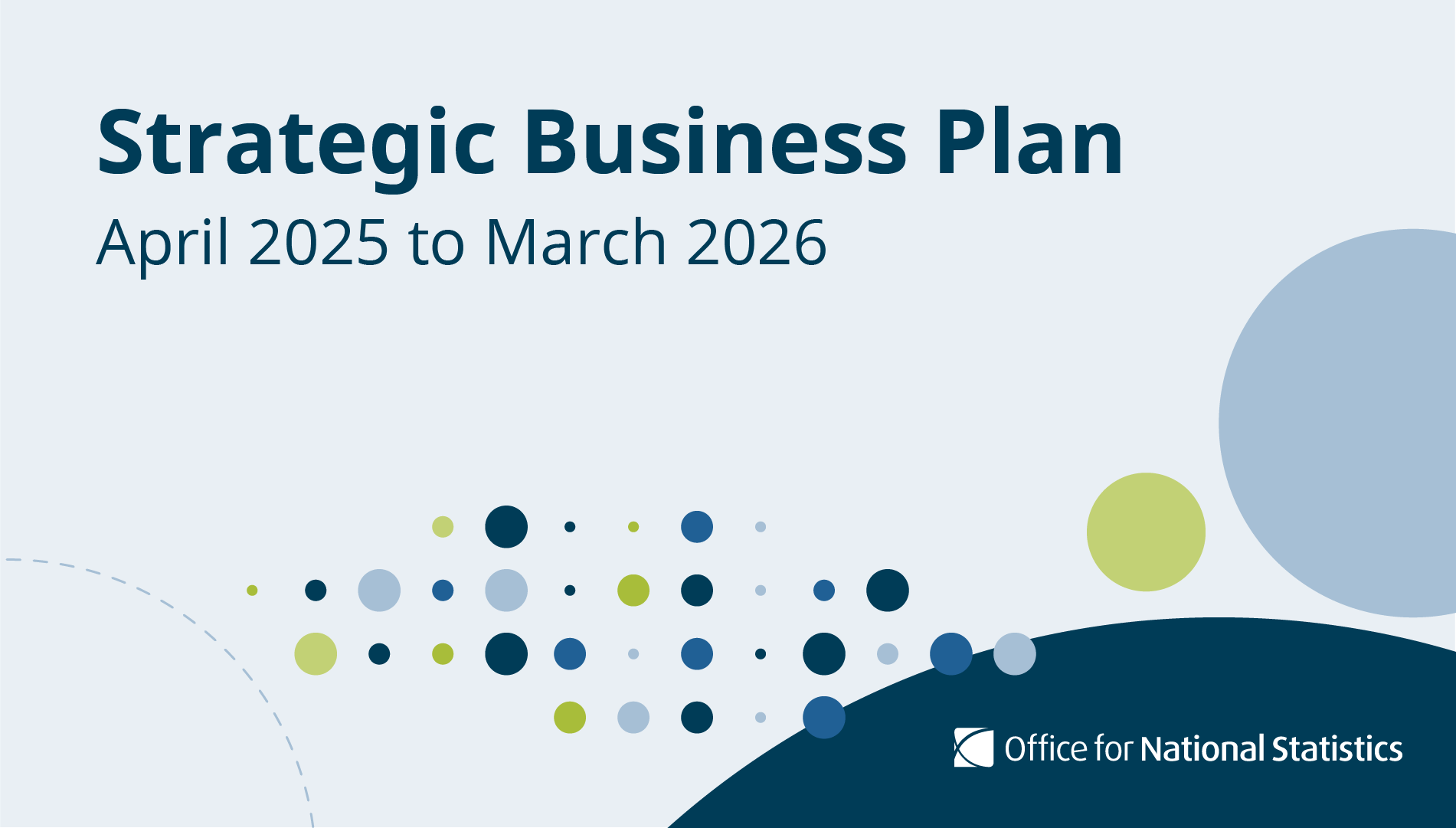Annex B: Resources
Finances
The table below sets out our expected funding for 2025/26 based on the settlement from HM Treasury as agreed at Autumn Budget 2024. The table aggregates the constituent elements of our overall funding into a ‘Total Departmental Expenditure Limit’ (TDEL) which forms the total budget for the year. TDEL is made up of two spending control totals set by HM Treasury relating to net resource and net capital expenditure.
| 2025 to 2026 expected funding | £m |
|---|---|
| Core funding | 365.2 |
| Future of Population and Migration Statistics (FPMS) | 11.0 |
| Integrated Data Programme (IDP) | 24.6 |
| Programmes (ring-fenced by HM Treasury) | 35.6 |
| Total | 400.8 |
We have continued to develop our view of the horizontal or end-to-end costs of our activities through successive business planning rounds. The table below provides an illustration of how we estimate the funding available in 2025/26 will be consumed in the achievement of our four priority outcomes. These figures will be further refined as we develop our approach to horizontal or activity-based cost monitoring.
| Resource Consumption by Priority Outcome | £m |
|---|---|
| Total Funding Excluding Income | 400.8 |
| PO1: Enhanced Reputation | * |
| PO2: Top Quality Core Statistics | 238.0 |
| PO3: Support for Government Missions and other users | 31.6 |
| PO4: Greater linked data capabilities | 29.1 |
| Corporate Services Costs | 102.1 |
| Total | 400.8 |
As with any organisation there are costs associated with the fundamental operations of our business areas which cannot be easily allocated to any one outcome. These costs that could be broadly described as corporate services have been separately identified in the table above. They cover the following high-level fundamental support activities including human resources, estates, finance, commercial, IT operations (licensing and IT kit costs), communications, and core security.
All funding from HM Treasury is subject to Parliament’s approval of the 2025/26 Main Estimate and is subject to change until that point. That approval is not expected until Summer 2025 and therefore the details provided in the table above may be subject to change. Budgets may also change through the Supplementary Estimate in early 2026.
In addition to the funding from HM Treasury detailed in the table above, the ONS expects to generate around £28 to 30 million of external income during 2025/26 based on current assumptions and following the trend of prior years. This income will be used to offset the marginal costs of generating the income, including overheads, and is tied to the activities specified by those commissioning ONS.
The ONS has delivered against its SR21 Efficiency and Savings Plan (ESP). This was a key contributor in enabling the organisation to meet the inflationary pressures it faced across this time frame. Efficiency and cost savings will continue to play an important role during SR25 with ONS committing to a plan to deliver against its productivity, efficiency and cost savings target of 2% in 2025/26.
Plans beyond 2025/26 will be subject to the Spending Review 2025 settlement (focussed on 2026/27 to 2028/29) due to conclude in June 2025.
People
We will align our existing workforce to our key priorities and bolster critical skillsets in certain areas supported by an updated People Plan.
As of 28 February 2025, the ONS had a workforce of 4,977 (FTE), including our national field force of 523 (FTE), distributed across 19 different professions.
As well as the long-established office locations in Newport, Titchfield and London, the ONS also has sites in Scotland (Edinburgh and East Kilbride), Darlington and Manchester. The tables below provide an overview of our current workforce as of 28 February 2025; all figures are full-time equivalent.
Workforce by Profession of Post
| Profession of Post | Full-Time Equivalent |
|---|---|
| Operational Delivery Profession | 1,724 |
| Government Digital and Data | 924 |
| Government Statistical Service Profession | 596 |
| Government Social Research Profession | 513 |
| Operational Delivery – Analytical | 314 |
| Government Project Delivery Service | 249 |
| Government Economic Service | 146 |
| Human Resources Profession | 134 |
| Government Communication Service | 81 |
| Policy Profession | 70 |
| Government Security Profession | 66 |
| Government Finance Profession | 54 |
| Government Operational Research Service | 30 |
| Government Commercial Service | 22 |
| Government Knowledge and Information Management Profession | 18 |
| Government Geography Profession | 16 |
| Government Property Profession | 14 |
| Internal Audit Profession | 4 |
| Government Corporate Finance Profession | 1 |
| Total | 4,977 |
Workforce by grade
| Grade | Full-Time Equivalent |
|---|---|
| Interviewer | 479 |
| AA or AO | 371 |
| EO (EO specialist) | 653 |
| HEO | 772 |
| HEO Specialist (AM, RO, SO, FS) | 238 |
| SEO | 856 |
| SEO Specialist (Methodologist, Senior SO, SRO) | 392 |
| G6 and G7 | 1,129 |
| SCS | 88 |
| Total | 4,977 |
Workforce by location
| Base location | Full-Time Equivalent |
|---|---|
| Newport | 2,590 |
| Titchfield | 1,265 |
| London | 224 |
| Manchester | 190 |
| Darlington | 141 |
| Edinburgh | 43 |
| East Kilbride | 2 |
| Field * | 523 |
| Total | 4,977 |
Diversity figures
| Declaration Type | Of the workforce that have declared*: |
|---|---|
| Gender | 55.2% are female |
| Disability | 23.3% are disabled |
| Ethnicity | 10.5% are from an ethnic minority |
| Sexual Orientation | 7.6% are LGBT+ |
| Overall Declaration Rate | 88.6% |

